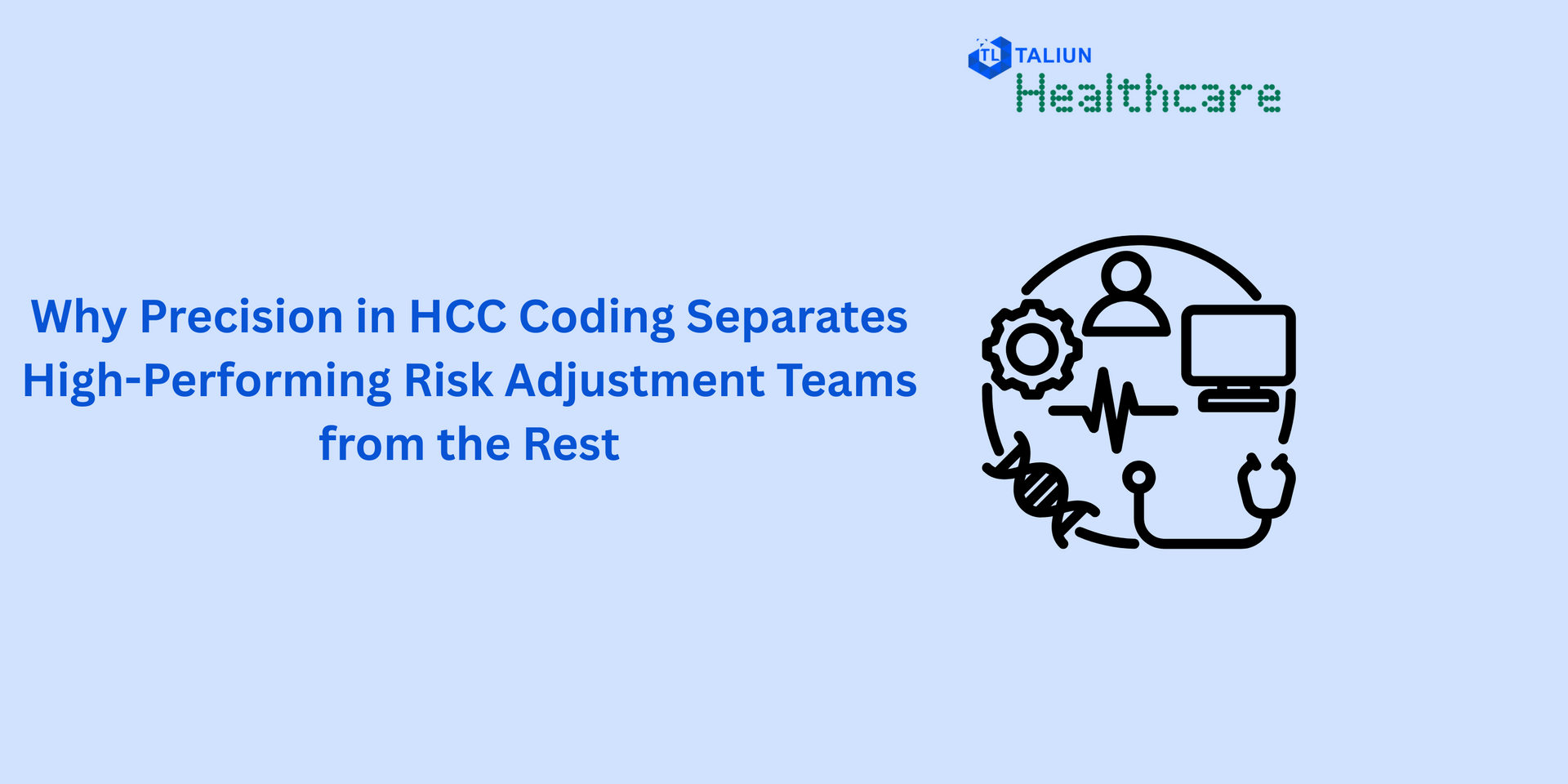Transitioning from CMS-HCC Model V24 to V28: Impact on RAF Scores

Value-based healthcare leaders are preparing for one of the most significant updates to Medicare’s risk adjustment system. In 2024, CMS began rolling out the new Hierarchical Condition Categories (HCC) Version 28 model, which will fully replace Version 24 (V24) by 2026. This comprehensive overhaul recalibrates every HCC coefficient, restructures condition categories, and removes many diagnosis codes from scoring. As a result, the RAF score (the risk adjustment factor that drives payments) will be calculated differently.
What Is a RAF Score?
A RAF score, or Risk Adjustment Factor score, is a numeric summary of a patient’s health risk and predicted healthcare costs compared to the average Medicare beneficiary. CMS calculates each RAF score by combining demographic weights (age, sex, disability status, Medicaid dual eligibility) with diagnosis-based HCCs flagged from the previous year’s data.
Each HCC a patient has contributes a weighted value to the overall score. A RAF score of 1.0 reflects average risk; 2.0 suggests twice the average cost, while 0.5 indicates half. RAF score range typically spans from around 0.3 to above 3.0, depending on patient complexity.
So, what is a good RAF score? It’s one that accurately reflects the clinical reality of a patient’s condition. For an average population, that score hovers near 1.0, with higher scores for more medically complex groups. RAF score calculation involves summing all relevant HCC and demographic weights and then normalizing to a mean of 1.0.
Key Changes in the V28 HCC Model
CMS rebuilt the HCC model around ICD-10 codes and more current data sources. Here are the key updates in Version 28 (V28):
- Updated ICD-10 classification: V28 is the first clinical model built entirely on ICD-10, enhancing clinical specificity within each HCC.
- New calibration data: The model’s weights were recalculated using 2018–2019 Medicare fee-for-service claims, replacing older 2014–2015 data. This changes the value of each condition in the RAF score calculation.
- More HCC categories: The number of HCCs has expanded from 86 to 115. Common conditions like diabetes, dementia, and heart failure are now split into more granular groups.
- ICD code remapping and removals: About 20% fewer ICD-10 codes map to payment HCCs in V28. Specifically, 2,236 codes that once contributed to a HCC RAF score are no longer included. Around 200 new codes have been added.
- Greater documentation precision: With more specific HCC definitions, providers must document additional detail. For example, instead of one category for depression or bipolar disorder, V28 uses separate HCCs for bipolar disorder and moderate or severe major depression. Similarly, dementia must now be documented as mild, moderate, or severe.
CMS is phasing in V28 over three years:
- 2024: RAF score = 67% V24 and 33% V28
- 2025: RAF score = 33% V24 and 67% V28
- 2026: RAF score = 100% V28
This transition gives plans time to adjust coding and documentation workflows.
Impact on RAF Score Calculation and Range
The RAF score calculation method remains the same (sum of applicable HCC and demographic weights). However, the inputs are changing significantly. Every HCC’s value has been adjusted, and many conditions have been removed or merged.
As a result, individual RAF scores may decrease under V28, especially for patients whose scores depended on HCCs that were dropped or reweighted. For example, a complex patient might have had a RAF score of 2.446 under V24, but only 1.014 under V28. Conditions like malnutrition were removed, and others such as certain amputation and peripheral arterial disease diagnoses were folded into broader diabetes categories.
CMS estimates that the combination of the V28 model and normalization adjustments will reduce Medicare Advantage payments by around 2.45% in 2025. This reflects an average RAF score decrease of 2–2.5% across the board.
The RAF score range remains centered around 1.0, but high-risk cases may show compressed scores. While extremely complex patients may still exceed 3.0, fewer severity codes now push scores upward. In effect, what is a good RAF score becomes more about comprehensive, specific documentation than ever before.
Adapting Documentation and Coding for V28
The move to V28 significantly raises expectations for accurate documentation. Providers must ensure every diagnosis is supported by detailed clinical notes.
For example:
- Dementia must now include severity (mild, moderate, or severe) in the documentation.
- “History of” codes should not be used for active conditions.
- COPD and asthma must be carefully differentiated to match HCC guidelines.
With 2,236 ICD codes removed from HCC mapping, using outdated or vague codes may yield no RAF score impact. Conversely, newer categories like heart failure with devices, or substance use with or without psychosis, will only count if properly documented.
Many EHR systems now offer tools to help clinicians choose more precise ICD-10 codes. Clinics should take advantage of these features and train staff accordingly. Thorough problem lists and clearly written progress notes are essential for capturing risk accurately under V28.
Conclusion
The transition from CMS-HCC V24 to V28 is one of the most impactful changes in RAF score healthcare strategy in years. While the method for how to calculate RAF score remains the same, the underlying risk model has shifted.
Stakeholders must:
- Understand the revised RAF score meaning
- Review new HCC mappings
- Train clinicians on documentation specificity
- Update coding and analytics processes accordingly
Under V28, failing to document and code conditions with precision could result in a lower HCC RAF score, even if patient complexity remains the same.
Taliun stands ready to support your organization through this transition. With advanced HCC analytics and coding intelligence, Taliun helps interpret the V28 changes and optimize their RAF score capture. Our tools ensure that your documentation stays aligned with the new model, so your value-based payment accuracy stays protected.




